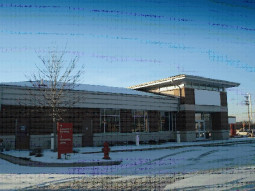Chicago Area Bank Branches Often Overassessed

Bank branches, in my opinion, are one of the most over assessed property types we have observed in the Chicago commercial appraisal market. Small differences in bank size, location or the competitive mix can have huge implications for the sale price of a branch bank. Most assessors (or appraisers) are unaware of these factors or incorrectly apply them in their analysis. The result is too often an unfair assessment for the property owner. Bank branch appraisers have a responsibility to educate themselves on this issue.
The Cook County assessor relies heavily on the cost approach to value, particularly for bank valuations. While a convenient approach, they often do not deduct the non-real estate elements of equipment, personal property or allow for obsolescence. According to Von Moody CRE, MAI, FRICS, CCIM, whose article "A Brief Overview of Value in Use vs. Value in Exchange in appraising Branch Banks" stated that "A significant portion of the initial investment is specific to the bank's operations and is attributable only to value-in-use."
Bank branches are constructed on business models whose design features are not always readily transferable to other users (even to other banks). In the article referenced above Von Moody states: "…that even when an institution sells a branch to another bank, their specific corporate needs are often divergent and significant obsolescence can exist. Items such as teller lines, drive-through lanes, parking, ATMs, offices, etc., may vary with divergent business models and the strategic customer focus of each."
Bank branches are not uniform monolithic structures that are easily interchangeable for any user. Bank branch sizes vary considerably, for example, depending upon the needs of the user. Based on a recent survey, a December 2010 CU (Credit Union) Management article show that the average size distribution of "newer branches in terms of square footage" is as follows:
| 2,000 sf. or less | 18% |
| 2,000 - 3,000 sf. | 45% |
| 3,000 – 3,500 sf. | 27% |
| 3,500 sf. Or greater | 10% |
Most banks configure their branches on specific target market characteristics rather than a blanket standard to every market. CU Management indicated that the average bank branch size has dropped significantly over the past 10 to 15 years. Smaller banks are cheaper to build and staff. Market penetration can often be achieved with smaller branches. Nevertheless, some other banks, like Bank of America, are trending toward fewer and larger branches with more staff.
According to Lawrence Hirsh, MAI in the April 1994 Appraisal Journal, Bank Branch Valuation: An Empirical Approach; "Research indicates that financial institutions are only concerned with real estate costs as they pertain to deposit levels." A scan of literature on bank branch acquisitions makes it very clear that the cost approach is simply not a consideration in the acquisition process.
The banking industry has been hard hit by consolidation in the industry. According to CoStar Group (September 2012), FDIC statistics indicate that bank branch closings have outpaced openings by an average of 48% in every quarter since the first quarter of 2011. Banks have closed 3,839 branches in that time while opening 2,595 for a net loss of 1,244 branches. This reflects negative retail absorption of branch banks from 2.5 to 5 million square feet.
Historically banks have viewed branch networks as their best form of customer contact and distribution. They allow for the development of relationship, loan development and deposits. As demographics change and an emerging population becomes more comfortable with internet banking, ATM’s and mobile banking, the brick and mortar buildings become less important. Costar sites Fitch in stating that it expects U.S. Banks to continue quietly downsizing its branch networks and increasingly rely on a less expensive, technology-driven distribution system. According to Diebold, a company that specializes in ATM and bank branch services, it costs $4.25 per transaction at a bank branch versus 8 cents through a mobile banking device. In a July 25, 2012 article by Costar titled “Banks Sharpening Axes for New Round of Downsizings” by Mark Heschmeyer, he outlines the extent of the problem. He cites a Jones Lang LaSalle report that predicts that as much as 50% of existing retail bank branches in the developed world will be obsolete by 2020 as banks assess their space requirements. Brent King, a bank consultant and author of "Branch Today, Gone Tomorrow" was quoted in CNBC.com (4/10/13) that customers visit branches 85% less than they did in 1995. The same article by Kevin Travis also indicated that 25% of U.S. Bank Branches are financially unaffordable.
Increasingly bank branches that come up for sale will be purchased by non-bank users. The special use nature of banks makes conversion difficult and often expensive. We believe the long term trend for this property class is negative due to the many issues we have discussed. As the assessor often utilizes historical sales, the possibility of over assessment is increased.
Much of our in-depth analysis goes well beyond the scope of this article. There are many nuances in the appraisal of Chicago area bank branches that most Chicago area commercial appraisers or assessor's do not even consider. Unfortunately for the client, the lack of understanding of these nuances often results in an unfair assessment.



